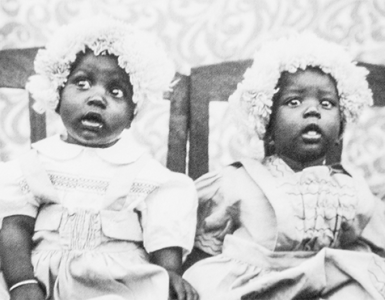TREASURE: The book is a fitting tribute to the iconic painter of Ndebele murals, who has generously and graciously shared her artistic gifts with the world for decades…
By Jacob Mawela
“I would continue to paint on the house when they left for a break. When they came back, they would say: what have you done child? Never do that again. After that I started drawing on the back of the house and slowly my drawings got better and better until they finally asked me to come back to the front of the house. Then I knew I was good at painting,” reminisced octogenarian South African national treasure and Ndebele artist Esther Mahlangu.

She was recalling the halcyon days of how, as a 10-year-old growing up and living with her grandmother and mother in Middelburg, Mpumalanga, used to dabble with paint to create what initially seemed goddamn mess which would land her in trouble with her irritated family .
The vivid memory forms part of the story of her nascent Ndebele mural painting journey at a tender age, fortuitously launching her as the heiress-apparent to the matriarchs’ custodianship of Ndebele culture.
This anecdote is one of the highlights in the fascinating excerpts contained in an aptly colourful tome on the elderly artists titled, To Paint Is In My Heart, coincidentally released on the day of her exhibition “Then I Knew I Was Good At Painting” – Esther Mahlangu, A Retrospective, opened at the University of the Witwatersrand’s WITS Art Museum (WAM) on November 19.
Compiled by the trio of Nigerian art curator Azu Nwagbogu, Swiss art historian Hans Ulrich Obrist and German author Thomas Girst, the book features a preface by Nontobeko Ntombela , a lecturer at Wits School of Arts and the curator of Mahlangu’s retrospective exhibition. It also features a tribute poem by sculptor Pitika Ntuli.
It is formatted as a conversation-cum-interview Nwagbogu, Obrist and Girst conducted with the matriarch at her home, against the backdrop of a abundant splashing of some 90 plus images of her artworks across the pages – with the back cover jacket emblazoned with glowing comments about her art from American crooner John Legend and South African comedian Trevor Noah.
Legend, who first met Mahlangu in 2016 while working together on the Global Fund campaign to fight HIV/AIDS in Africa, and also attended the artist’s recent exhibition in Atlanta, gushes about her oeuvre: “A symphony of colours and traditions, weaving together a narrative that transcends borders and generations . . . a treasure trove . . . each brushstroke is a testament to her unparalleled talent and the power of art to unite us all.”
As testament of Mahlangu’s craft’s influence, an essay by vogue fashionista Thebe Magugu narrates his fascination for the Ndebele whose garments represent traditional attire (from the ‘Umbhalo’, the graphic mid-weight blanket, to the ‘Linrholwani’, the large hoops and cuffs made of beaded strands of twisted grass that encircle the neck) completely untouched by the influence of
In an opening stanza from a poem titled Kgari Esther Mahlangu by fellow octogenarian and artist, Professor Ntuli, he recites: “Her brush dances with colours capturing her Ndebele history; where culture and tradition thrive; she paints with passion to keep her heritage alive; hand steady as a measuring rod; throughout apartheid times her murals a flag of hope; bold strokes and intricate patterns; geometric images smiling in bright colours . . .”
Mahlangu’s creative process and approach involves hand-painting (with chicken feathers substituting brushes) or paint brushing by which she applies natural pigments (such as rich colours found by the river and mixed with cow dung) and acrylic paints to produce geometric motifs (mostly of razorblade patterns) she displays onto surfaces such as homes, walls, pottery, textiles to produce aesthetically appealing colourful patterns laden with symbolism, spiritual beliefs and cultural identity.
All accomplished sans the use of a conventional studio or the aid of instruments such as rulers. The featured artwork, mostly a variation of the razorblade patterns, are a phantasmagoric cornucopia of attestation to the creator’s vision that: ‘The most important thing is that the artwork must catch your eye. I always want to make something that looks beautiful.’
In her conversation with the authors, she lets them in on varying topics ranging from the process involved in the production of her craft, the interpretation of her art (described as a blend of abstract and figurative elements with patterns linked to anything from mathematics to cosmology) being a representative of her culture within the global framework. This is addition to responding to their curiosities regarding the importance of time to her, her definition of art, her favourite city around the world.
Observed Obrist of the 89-year-old: “Esther Mahlangu is one of the most important artists of our time who continues to inspire artists all over the world.”
Located at the account’s tail-end is Mahlangu’s biography which unfolds a resume which limns a creator par excellence whose genesis to international fame commenced with her participation in the group show ‘Magiciens de la Terre’ at Centre Pompidou in Paris in 1989.
Thereafter, she progressed to becoming the first woman artist and African to paint a BMW Art Car (a feat which resulted in her joining the exclusive company of artists such as, Jenny Holzer, Andy Warhol, Frank Stella, David Hockney, who had been commissioned by the German automobile manufacturer to create a canvas on an automobile to “show that BMW is a player in the arts”) in 1991.
Regarding the BMW Art Car – a 525i sedan which forms part of her current exhibition at WAM – she’s quoted thus: “I painted the car like a wall. And for the Ndebele people, if you begin to paint awall, it means . . . that something big is going to happen.”
Considering the leaps and bounds which her work proceeded on to realise since back then at the beginning of the 90s – her omen was on point.
‘Long after I am not here anymore, people will still go and see the paintings and they will remember there was an artist called Esther Mahlangu,’ observed the mainstay who between 1980 and 1991 lived and toiled away teaching visitors about Ndebele life and practices at the open-air Botshabelo Historical Village in Mpumalanga Province.
Hans Ulrich Obrist is a Swiss art curator, critic, and art historian, while Azu Nwagbogu is a Nigerian art curator, writer and art collector. He is the founder and Director of the African Artists’ Foundation – a non-profit organization dedicated to promoting African art and artists.
Thomas Girst is the global Head of Cultural Engagement at the BMW Group. In 2016, he was the recipient of the “European Cultural Manager of the Year” award. His prominent publications include Art, Literature, and the Japanese American Internment; BMW Art Cars; and 100 Secrets of the Art World.
* To Paint Is In My Heart is published by Thames & Hudson and distributed in SouthAfrica by Jonathan Ball Publishers. Available at leading bookstores countrywide, it retails for R685.































